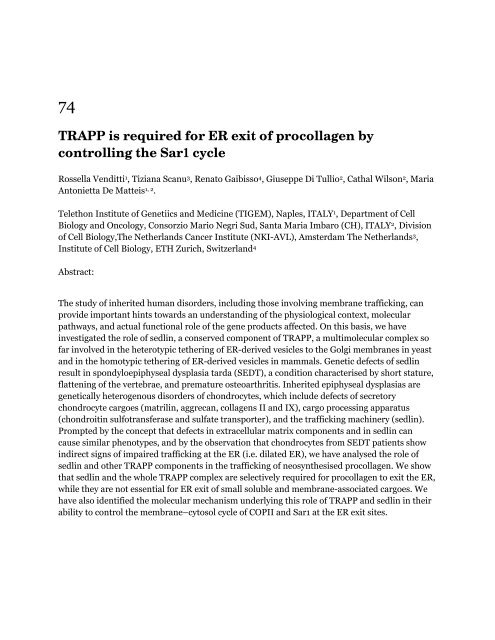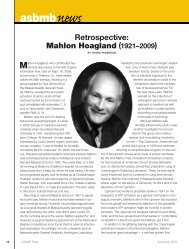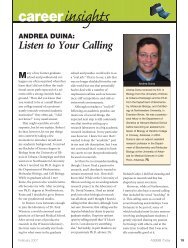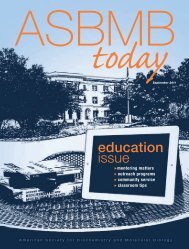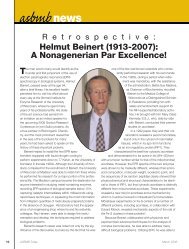View Program - asbmb
View Program - asbmb
View Program - asbmb
- TAGS
- program
- asbmb
- www.asbmb.org
Create successful ePaper yourself
Turn your PDF publications into a flip-book with our unique Google optimized e-Paper software.
74<br />
TRAPP is required for ER exit of procollagen by<br />
controlling the Sar1 cycle<br />
Rossella Venditti 1 , Tiziana Scanu 3 , Renato Gaibisso 4 , Giuseppe Di Tullio 2 , Cathal Wilson 2 , Maria<br />
Antonietta De Matteis 1, 2 .<br />
Telethon Institute of Genetiics and Medicine (TIGEM), Naples, ITALY 1 , Department of Cell<br />
Biology and Oncology, Consorzio Mario Negri Sud, Santa Maria Imbaro (CH), ITALY 2 , Division<br />
of Cell Biology,The Netherlands Cancer Institute (NKI-AVL), Amsterdam The Netherlands 3 ,<br />
Institute of Cell Biology, ETH Zurich, Switzerland 4<br />
Abstract:<br />
The study of inherited human disorders, including those involving membrane trafficking, can<br />
provide important hints towards an understanding of the physiological context, molecular<br />
pathways, and actual functional role of the gene products affected. On this basis, we have<br />
investigated the role of sedlin, a conserved component of TRAPP, a multimolecular complex so<br />
far involved in the heterotypic tethering of ER-derived vesicles to the Golgi membranes in yeast<br />
and in the homotypic tethering of ER-derived vesicles in mammals. Genetic defects of sedlin<br />
result in spondyloepiphyseal dysplasia tarda (SEDT), a condition characterised by short stature,<br />
flattening of the vertebrae, and premature osteoarthritis. Inherited epiphyseal dysplasias are<br />
genetically heterogenous disorders of chondrocytes, which include defects of secretory<br />
chondrocyte cargoes (matrilin, aggrecan, collagens II and IX), cargo processing apparatus<br />
(chondroitin sulfotransferase and sulfate transporter), and the trafficking machinery (sedlin).<br />
Prompted by the concept that defects in extracellular matrix components and in sedlin can<br />
cause similar phenotypes, and by the observation that chondrocytes from SEDT patients show<br />
indirect signs of impaired trafficking at the ER (i.e. dilated ER), we have analysed the role of<br />
sedlin and other TRAPP components in the trafficking of neosynthesised procollagen. We show<br />
that sedlin and the whole TRAPP complex are selectively required for procollagen to exit the ER,<br />
while they are not essential for ER exit of small soluble and membrane-associated cargoes. We<br />
have also identified the molecular mechanism underlying this role of TRAPP and sedlin in their<br />
ability to control the membrane–cytosol cycle of COPII and Sar1 at the ER exit sites.


